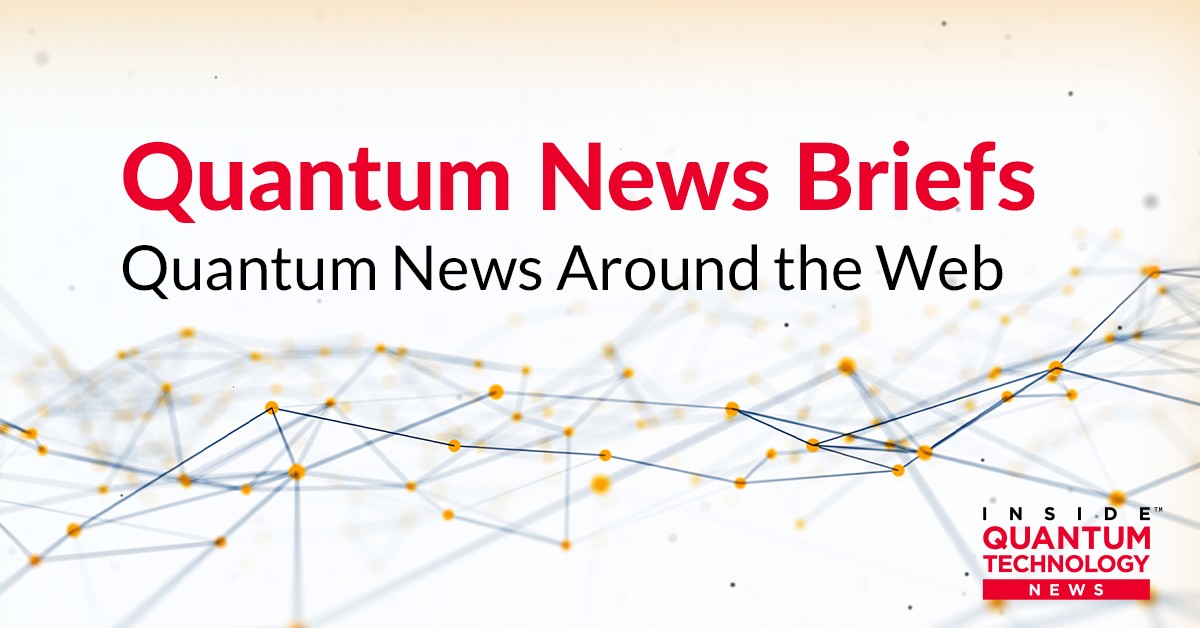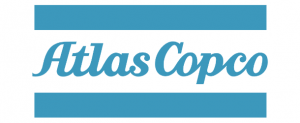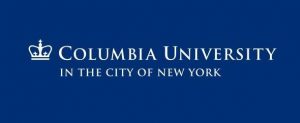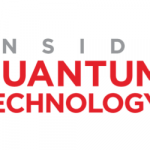Quantum News Briefs August 29: Interview in Forbes with Lawrence Gasman, co-founder and president of IQT: “Quantum Computing Now & In The Future: Explanation, Applications & Problems”; Atlas Copco to acquire Montana Instruments Corporation; Quantum Catalyzer (Q-CAT) expands and relocates to UofMaryland Discovery District & MORE

Quantum News Briefs opens today with Bernard Marr’s Forbes interview with Lawrence Gasman, co-founder and president of IQT: “Quantum Computing Now & In The Future: Explanation, Applications & Problems”; followed by news that Atlas Copco is to acquire Montana Instruments Corporation; the announcement that Quantum Catalyzer (Q-CAT) is expanding and relocating to UofMaryland Discovery District is next with MORE.
Interview in Forbes with Lawrence Gasman, co-founder and president of IQT: “Quantum Computing Now & In The Future: Explanation, Applications & Problems”
 Bernard Marr, a Forbes contributor, recently provided his overview of where we currently are and where we’re hoping to get to with quantum computing, with expert input from Lawrence Gasman, co-founder and president of Inside Quantum Technology and author of over 300 research reports. Quantum News Briefs provides excerpts of the podcast conversation that was published in Forbes August 26; click here for original article.
Bernard Marr, a Forbes contributor, recently provided his overview of where we currently are and where we’re hoping to get to with quantum computing, with expert input from Lawrence Gasman, co-founder and president of Inside Quantum Technology and author of over 300 research reports. Quantum News Briefs provides excerpts of the podcast conversation that was published in Forbes August 26; click here for original article.
Gasman explains the benefits of a quantum computer, “. . . you can process a lot more information on a quantum computer, and that means you can do some problems much faster. And sometimes that really matters – sometimes it’s not ‘whoopee I can do this in two hours instead of two days’, it’s ‘whoopee I can do this in two hours instead of nine million years.’”
Marr commented there hasn’t yet been a use case discovered for quantum computers that can’t already be done with classical computers. The problem, Gasman tells me, is that. ..” it will take classical computers so long to solve them that anyone who starts looking for the answer today will be long dead! “.
Marr pointed out There’s also a critical shortage of people with the skills to develop and work with quantum computers. As Gasman puts it, “what you want is someone who is a computer scientist, and a physicist, and an expert on pharmaceuticals or finance – the specifics of the disciplines are so different that getting people to talk to each other is quite difficult!”
As for the future, Gasman says,”The exciting thing for me is the breakthroughs that are likely to happen. To mix metaphors, the world is quantum computing’s oyster. There are lots of good reasons to be in classical computing, but if you’re looking for the massive breakthroughs – it ain’t going to happen. That’s the excitement of quantum computing.”
The audio webinar version of the interview is also available at close of original Forbes article.
*****
Atlas Copco to acquire Montana Instruments Corporation
 Atlas Copco has agreed to acquire Montana Instruments Corporation. The company provides cryostat solutions for customers involved in physics research and low temperature technology solutions. Quantum News Briefs shares the announcement.
Atlas Copco has agreed to acquire Montana Instruments Corporation. The company provides cryostat solutions for customers involved in physics research and low temperature technology solutions. Quantum News Briefs shares the announcement.
Montana Instruments Corporation is a privately owned company with 38 employees, located in Bozeman, Montana, USA. In 2021, the company had revenues of approximately MUSD 12 (MSEK 106*).
A cryostat is a system used to cool an object to very low temperature and enable measurement of various properties. The Montana Instrument cryostats can attain temperatures down to 4 Kelvin (minus 269 Celsius or minus 425 Fahrenheit) without the use of liquid cryogens. The cryostats are typically used to observe and characterize quantum physics in cold materials.
“The acquisition will allow us to further extend our existing presence in the cryogenic markets and with our R&D customers,” said Geert Follens, Business Area President Vacuum Technique. “It also provides an additional channel into quantum technology related markets where commercial applications are starting to grow.”
The purchase price is not disclosed. The acquisition is subject to regulatory approval and is expected to close during the fourth quarter of 2022.
The company will become part of the Scientific Vacuum Division within the Vacuum Technique Business Area.
*****
Quantum Catalyzer (Q-CAT) expands and relocates to UofMaryland Discovery District
 Quantum Catalyzer (Q-Cat) recently relocated to the University of Maryland’s Discovery District, home to other successful quantum startup companies such as IonQ. The mission of Q-Cat is to create and grow successful quantum companies, helping high-impact technology transition out of academia and into the real world.
Quantum Catalyzer (Q-Cat) recently relocated to the University of Maryland’s Discovery District, home to other successful quantum startup companies such as IonQ. The mission of Q-Cat is to create and grow successful quantum companies, helping high-impact technology transition out of academia and into the real world.
Q-Cat’s new headquarters will be at 5825 University Research Court, Suite 2200, in College Park, Maryland. The move provides over 4,000 square feet of newly renovated lab and office space for Q-Cat’s expanding operations. This concentration of commercial quantum activities in the state of Maryland and Prince George’s County further fuels the area’s reputation as the “Capital of Quantum.”
Dr. Ronald Walsworth, Q-Cat founder and Director of the University of Maryland’s Quantum Technology Center, explained, “Q-Cat is growing rapidly and needs high quality facilities for further success. The new space in the Discovery District is a perfect fit to Q-Cat’s needs.”
Q-Cat provides its portfolio companies with shared personnel, expertise, and key resources, such as the state-of-the-art lab and office space in the Discovery District. This new home for Q-Cat will also allow hosting of partners and collaborative technical demonstrations, further building the local quantum ecosystem.
To date, Q-Cat has created four quantum companies spanning applications in next-generation microelectronics, specialized research and educational tools, and enabling efficient green energy generation at scale.
“We are thrilled that Q-Cat has joined other successful companies in the Discovery District. Quantum continues to be a growing strength of the University, and Q-Cat’s unique focus on commercialization of quantum technology will result in many more quantum spin-outs, solidifying the Discovery District as a national hub of quantum,” said Ken Ulman, UMD’s Chief Strategy Officer for Economic Development.
*****
DOE Renews Columbia’s Energy Frontier Research Center with a four-year $12.6 million grant
 Columbia University quantum researchers have successfully recompeted for an Energy Frontier Research Center (EFRC) grant, the Department of Energy (DOE) announced this week. Columbia’s current EFRC on Programmable Quantum Materials (Pro-QM), established in 2018, will receive $12.6 million over the next four years to advance new materials, tools, and physics that enable the on-demand creation and control of quantum phases.
Columbia University quantum researchers have successfully recompeted for an Energy Frontier Research Center (EFRC) grant, the Department of Energy (DOE) announced this week. Columbia’s current EFRC on Programmable Quantum Materials (Pro-QM), established in 2018, will receive $12.6 million over the next four years to advance new materials, tools, and physics that enable the on-demand creation and control of quantum phases.
To develop new quantum devices, including quantum computers, sensors, and networks, researchers need to be able to control the quantum properties of materials and light, areas of research with a long history of breakthroughs at Columbia.
In addition to DOE funding, New York State is also providing support to the center with a matching commitment of up to an additional $500,000 from Empire State Development’s Division of Science, Technology and Innovation (NYSTAR).
*****
Five NQISRCs aligned to mission to advance quantum information science
 Five National Quantum Information Science Research Centers (NQISRCs) are leveraging the behavior of nature at the smallest scales to develop technologies for science’s most complex problems. Supported by the U.S. Department of Energy (DOE) Office of Science, the NQISRCs have been supporting DOE’s mission since 2020 to advance the energy, economic and national security of the United States. By building a national quantum ecosystem and workforce comprising researchers at roughly 70 institutions across the United States, the centers create a rich environment for quantum innovation and co-design. Quantum News Briefs summarizes the recent Phys.org article.
Five National Quantum Information Science Research Centers (NQISRCs) are leveraging the behavior of nature at the smallest scales to develop technologies for science’s most complex problems. Supported by the U.S. Department of Energy (DOE) Office of Science, the NQISRCs have been supporting DOE’s mission since 2020 to advance the energy, economic and national security of the United States. By building a national quantum ecosystem and workforce comprising researchers at roughly 70 institutions across the United States, the centers create a rich environment for quantum innovation and co-design. Quantum News Briefs summarizes the recent Phys.org article.
The NQISRCs integrate state-of-the-art DOE facilities, preeminent talent at national laboratories and U.S. universities, and the enterprising ingenuity of U.S. technology companies.
As a result, the centers are pushing the frontier of what’s possible in quantum computers, sensors, devices, materials and much more.
Each national center is led by a DOE national laboratory:
- Co-design Center for Quantum Advantage (C2QA), led by Brookhaven National Laboratory
- Q-NEXT, led by Argonne National Laboratory
- Quantum Science Center (QSC), led by Oak Ridge National Laboratory
- Quantum Systems Accelerator (QSA), led by Lawrence Berkeley National Laboratory
- Superconducting Quantum Materials and Systems Center (SQMS), led by Fermi National Accelerator Laboratory
“Each center is a formidable force for quantum information science on its own, pushing the frontiers of computing, physics, chemistry and materials science to bring transformational new technologies to the nation,” said Q-NEXT Director David Awschalom. “But together, they’re a national powerhouse, elevating quantum science and engineering to special prominence in the U.S. and positioning the country to be a global leader in the field.”
*****
Sandra K. Helsel, Ph.D. has been researching and reporting on frontier technologies since 1990. She has her Ph.D. from the University of Arizona.



















